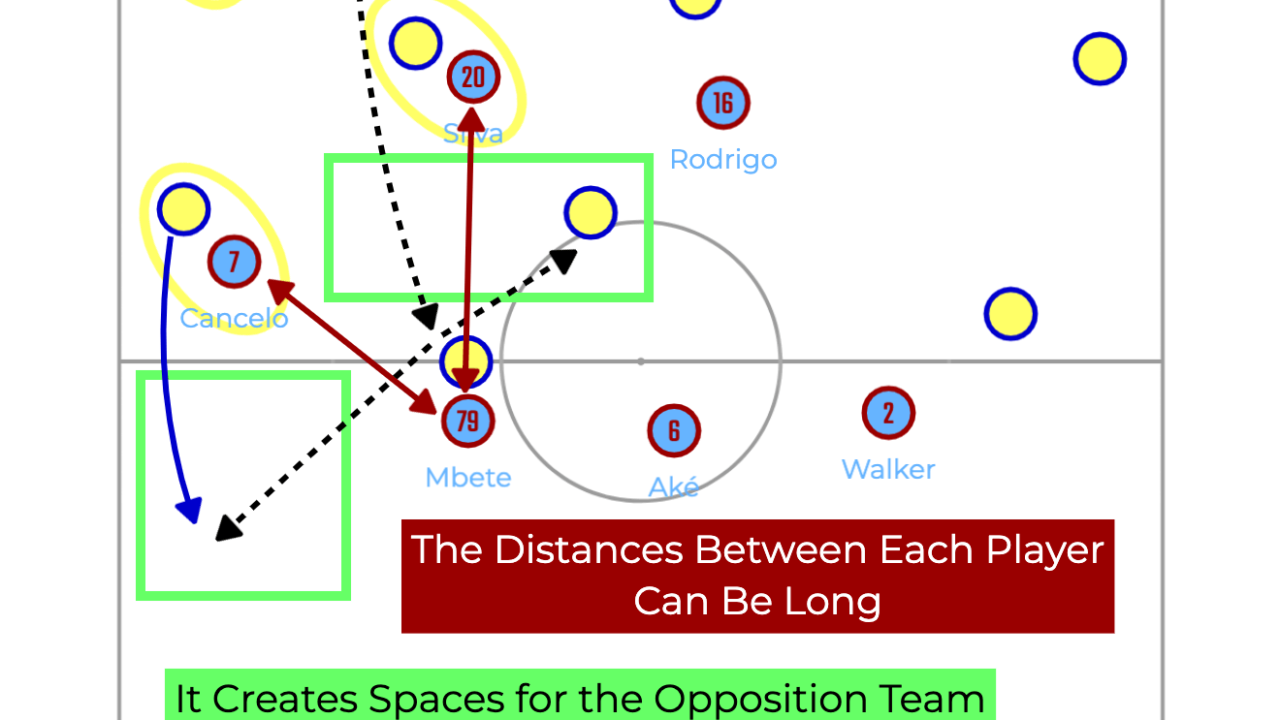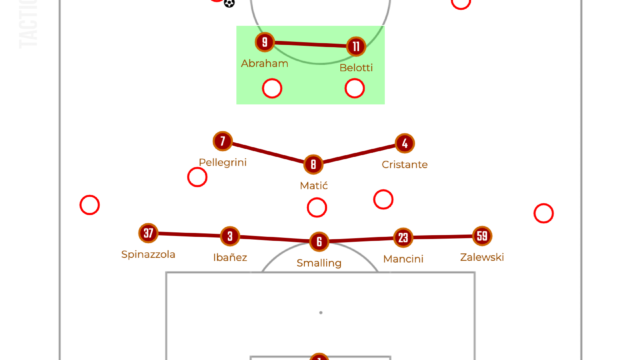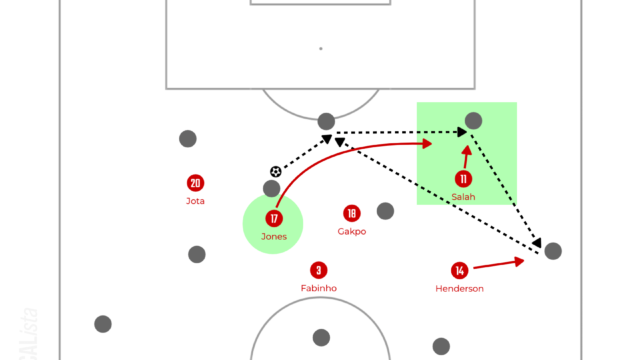Introduction
Manchester City have concluded their preseason tour in the USA with two narrow wins against Club América and Bayern Munich. The Premier league champions could sign two strikers, Erling Haaland and Julián Álvarez, who both can play the role of traditional strikers and seem to play more directly towards the goal. However, both two goals against Club América were scored by Kevin De Bruyne in his style and the one against the German champions was a tap-in by Haaland from a set piece. In this article, the reason why new City looked same even though they signed two strikers and how they are going to play in the new season will be explored.
Pressing to Score
Pep’s City is always recognised as a possession team but the high intensity of pressing should be also highlighted. One of the main reasons why City try to press high is, of course, to regain the ball as soon as possible to keep playing with the ball in the opposition half. However, what City players did after winning the ball by high or middle pressing was not trying to keep possession again but attack the goal directly. Especially, De Bruyne can play through the opposition final line thanks to his vision and power on the ball and both wingers and the striker are ready for running in behind. This is not the traditional way of Pep Guardiola, which is making more than 15 passes after regaining the ball in order to reorganise the positions.
But why has he changed to play more directly after winning the ball? One of the reasons of this can be that it is getting more difficult to break down the opposition low block due to the evolution of defending the goal in the final third. These days, more and more teams know how to defend against City. For example, back five can close the gap between the defenders to defend the channel or five midfielders can prevent them from playing through the line and exploiting the space in between the lines. Therefore, City need to find another way of scoring goals. One of the solutions is counterattacks from high or middle pressing.
The traditional City’s way of attacking is disorganise and break down the opposition block in the situation where both teams are organised. In other words, City try to disorganise the opposition team while maintaining their own structure. As it was discussed before, however, the opposition teams become more stable when defending deep and City sometimes struggle with disorganising them. Therefore, City want to attack when the opposition teams are already disorganised and it is when they lose the ball. That is why short counterattacks from pressing can be another solution and Haaland will be crucial.
Counterattacks can be new threat for City as well as the opposition teams. This is because counterattacks can disorganise their own structure. In order to maintain the structure, more than 15 passes are required as Pep said, but counterattacks need only a key pass from De Bruyne and it means that there is not time enough to reorganise the positions. Therefore, if the counterattack is unsuccessful, City would concede a counterattack and it is impossible to defend this with proper structure because there is no time to restructure the positioning of defenders. Thus, City need to score if they play directly and this is why Haaland is vital. In many chances, City failed to score goals in previous seasons, which could lead the opposition counterattacks. Haaland is only required to conclude counterattacks.
Then, how City try to press is going to be discussed. In both preseason games, City utilised same pressing style. In high pressing, they tried to mark the opposition players as soon as possible and force them to play long. If City needed to defend in the middle third of the pitch, they organised a compact 4-4-2 block with De Bruyne stepping up to the first line and pressed on the ball in the proper moment. Basically, higher they press, earlier they change from defending the space to marking the opposition player. In next chapter, the detail of City’s pressing is going to be analysed.
Firstly, how to force the opposition team to play back when defending the middle third is going to be discussed. As it was mentioned earlier, City organised the compact 4-4-2 block and waited the right moment to press on the ball. The defensive block is compact both vertically and horizontally, which make it difficult for the opposition team to play into the space in between the lines. On the other hand, it is possible to exploit the space in the wide areas or behind the defenders. Thus, City need to prevent the opposition teams from playing into these spaces. In order to cut the passing lanes to the wide players, wingers often apply pressure on the opposition centre backs from outside, which forces them to play forward or backwards. This is because if the centre back tries to play a split pass into to one of the midfield players, he will find it difficult because both strikers cut the passing lanes to the defensive midfielders and Rodrigo or Bernardo Silva is ready to mark the attacking midfielder. Therefore, the centre back has to play backwards or long forward.

If the centre back plays back to the goalkeeper, City players push the lines up and keep pressing to let the goalkeeper play long. This is what City want to do. The player marking the opposition centre back who played back to the goalkeeper keeps pressing and forces him to play long. Therefore, the centre back has only one option which is playing long or the goalkeeper will be forced to play long anyway.
However, City still have a problem of dealing with those long balls. To be fair, this is not the problem of this preseason, but they have left this unsolved for a long time and this is why they conceded the second gall against Aston Villa in the final game of the last season. The main reason is the timing to mark the opposition players is sometimes little bit earlier, which makes it difficult to secure the second balls or covering the space in behind. When City apply high pressure on the opposition centre backs or goalkeeper, the players around the ball try to mark the opposition players to prevent them from playing short. Therefore, the distance between each player can be longer, which creates big space and makes it difficult to regain the second balls or defending the space in behind if the opposition player chooses to play long.

Therefore, the ideal way of regaining the ball is winning it when the opposition centre back plays short into the middle area where Rodrigo or Silva is ready for tackling or intercepting the ball. After winning the ball there, both wingers or the striker run in behind and try to receive the excellent ball from De Bruyne. The wingers often position themselves in higher area of the pitch in order to press on the centre backs and this is beneficial when playing counterattacks. They can immediately run into the channel and lead the counterattacks.
Overall, this tactic is executed thanks to the pressing ability of both Álvarez and Haaland. They can apply pressure and lead the pressing. If they can score a lot from counterattacks which have begun from their own pressing, City can have another source of scoring goals.
3-2-5 & 2-3-5
Although the pressing and counterattacks were discussed in the previous chapter, keep possession and dominate the game by maintaining the structure are still the main option to win the game. Their possession skill and tactics are mature enough and there was nothing new in both preseason games. The main system is a 4-1-2-3 but they are flexible and adjust it to each phase of the game. As it was discussed, they mainly change it to a 4-4-2 by pushing De Bruyne to the first line when defending. On the other hand, City utilised two different but familiar systems in possession.
Against Club América, João Cancelo, the left fullback, moved next to Rodrigo and City played with a 3-2-5 in possession. Cancelo hardly played this role last season, but this task is a traditional false fullback which Pep brought to City.

In the second half, Cancelo was replaced by Josh Wilson-Esbrand who can be described as a winger-fullback. Therefore, Silva dropped next to Rodrigo, Jack Grealish came to play in the left half space and Wilson-Esbrand gave City width in the higher area of the left side. Thanks to this kind of rotation, City maintained the 3-2-5 throughout the game.

On the other hand, against Bayern Munich, City played with a 2-3-5 in possession with Cancelo starting as a right fullback and Wilson-Esbrand playing as a left fullback. There are two reasons why City did not play with the 3-2-5 and keep both fullbacks wide and deep. Firstly, in order to maintain back three, Kyle Walker is necessary. He is excellent at playing as a right centre back both keeping possession and defending counterattacks. However, Cancelo and Wilson-Esbrand are attacking-minded and like to play in the attacking third. Therefore, City could not build up with the back three. Another reason is Bayern’s formation. The German side pressed with a 5-3-2, which means City needed to use the space in deeper wide areas to drag three midfielders out. Then, the players who receive the ball in those areas are both fullbacks. Therefore, they were required to stay in original fullback position and did not need to come inside or go higher. And this is also familiar system of Pep City.

So far, only how similar the systems compared to previous seasons are was discussed. But these are just numbers and the principle of how to progress the ball is much more important, although this is also same as before. In both the 3-2-5 and 2-3-5, they try to break the opposition midfield line by creating overload in wide areas. Both wingers keep width and pin the opposition fullback or wingback so that attacking midfielder can receive the ball in between the lines without being pressed by the opposition fullback or wingback. If the opposition centre back steps up to apply pressure on the attacking midfielder, the striker can exploit the space by running through the gap between the opposition centre backs.

Of course, if the opposition teams fail to close the gap between the defensive midfielders, the striker, especially Álvarez, can drop and receive the ball in the middle of the opposition defensive block. These methods are completely same as previous seasons, and this is why City in this preseason did not look new.
Then, after breaking the opposition midfield line, what they are going to do is just penetrating into the box and trying to score goals. However, they struggled with penetrating into the box, probably because of unavailability of some key players, but it is worth identifying the problems.
Problems in Final Third
There are mainly two reasons. Firstly, both wingers Mahrez and Grealish love to dribble inside, so it was difficult to break the final line and get depth. In the last season, left-footed Phil Foden on the left side and right-footed Raheem Sterling on the right side were chosen to get depth. For example, in the last game of the season, Sterling came in, dribbled forward and delivered that cross. If the winger can dribble forward like what Sterling did, the opposition defenders need to move vertically, which stretches the space in between the lines. However, if the winger only cuts inside, the opposition defenders, especially centre backs, do not need to move so it is easy to defend. Therefore, someone who can run in behind to get depth is required but this is the second problem. Mainly, it is a task for attacking midfielder to run into the channel but De Bruyne sometimes drifts wide to receive the ball outside of the opposition defensive block and is not ready for running in behind. On the other hand, Silva can stay at the left half space thanks to Cancelo coming inside and supporting Rodrigo as another defensive midfielder and run into the channel against Club América. However, against Bayern Munich, the left fullback Wilson-Esbrand position himself in deeper wide area so Silva needed to drop to support Rodrigo. Therefore, he is too far to run in behind the opposition defenders. These make City difficult to exploit the space in behind the opposition defenders and less effective to penetrate into the box. Of course, fullbacks can overlap the wingers and give an option in behind the opposition defenders. However, it is just playing around the opposition defenders and it is still difficult to enter the box by overlapping.
Conclusion
In this article, the tactics and ideas of new City was discussed. Obviously, this is still preseason and some important players did not play, so it is difficult to evaluate their performance. However, some new ideas or problems were found in these two games, and it is interesting to see what will happen in the new season. Thank you for reading.



